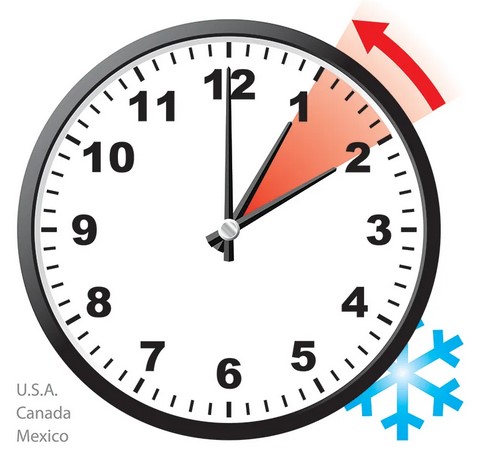
Clocks “fall back” at 2am on Sunday, November 6, 2022, making November 6 a 25-hour day.
Suggestion: Update your clocks before going to bed on Saturday evening.
Hints on which clocks to adjust.
While our computers and smartphones will adjust to the time change automatically, these gadgets may have to be updated manually.
| Kitchen Oven/Stove | Clock radio/alarm | Car/truck clock |
| Coffeemaker | Wall clocks | Wristwatches |
| Microwave | Alarm System | Medical equipment |
Suggestion: Now is a great time to replace the batteries in your smoke detectors and carbon monoxide detectors as well.
Did you know?
It’s daylight saving time, not daylight savings time.
While it’s common to hear people say “daylight savings time” or just “daylight savings,” the correct term is “daylight saving time.” There’s a grammatical reason for keeping “saving” singular, but you can also think of it this way: What are you doing during this time? Saving daylight. Thus, daylight saving time.
It’s not a worldwide (or even nationwide) phenomenon.
About 70 countries observe daylight saving time nationwide or in certain regions. Most African and Asian countries, including India, China and Japan, skip the clock change altogether.
Not all U.S. states practice daylight saving time, either. Hawaii and Arizona are on permanent standard time, as are Guam, American Samoa, Puerto Rico and the Virgin Islands.
The time frame used to be different.
In the United States, daylight saving time starts on the second Sunday of March and ends the first Sunday in November. But that wasn’t always the case, Geiger says. Prior to the Energy Policy Act of 2005, which went into effect in 2007, daylight saving time was observed from early April until late October.
Many states want to stop changing the clock.
In the last few years, 19 states have either enacted legislation or passed resolutions to stick to daylight saving time year-round, but implementing this change would require an update to federal law.
